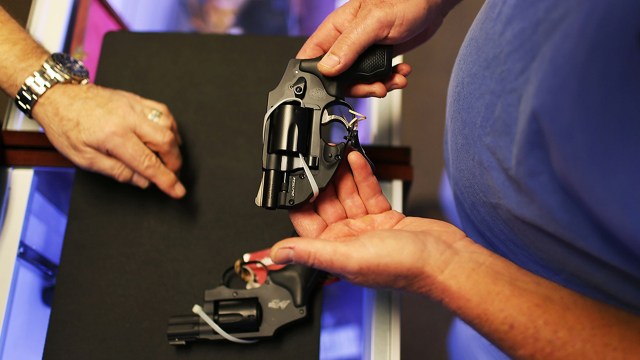
Guns are deeply ingrained in American society and the nation’s political debates.
The Second Amendment to the United States Constitution guarantees the right to bear arms, and about a third of U.S. adults say they personally own a gun. At the same time, in response to concerns such as rising gun death rates and mass shootings, the U.S. surgeon general has taken the unprecedented step of declaring gun violence a public health crisis.
Here are some key findings about Americans’ views of gun ownership, gun policy and other subjects, drawn from Pew Research Center surveys.
Pew Research Center conducted this analysis to summarize key facts about Americans’ relationships with guns. We used data from recent Center surveys to provide insights into Americans’ views on gun policy and how those views have changed over time, as well as to examine the proportion of adults who own guns and their reasons for doing so.
The Center survey questions used in this analysis, and more information about the surveys’ methodologies, and can be found at the links in the text.
Measuring gun ownership in the United States comes with unique challenges. Unlike many demographic measures, there is not a definitive data source from the government or elsewhere on how many American adults own guns.
The Pew Research Center survey conducted June 5-11, 2023, on the Center’s American Trends Panel, used two separate questions to measure personal and household ownership. About a third of adults (32%) say they own a gun, while another 10% say they do not personally own a gun but someone else in their household does. These shares have changed little from surveys conducted in 2021 and 2017. In each of those surveys, 30% reported they owned a gun.
These numbers are largely consistent with rates of gun ownership reported by Gallup and those reported by NORC’s General Social Survey.
The FBI maintains data on background checks on individuals attempting to purchase firearms in the United States. The FBI reported a surge in background checks in 2020 and 2021, during the coronavirus pandemic, but FBI statistics show that the number of federal background checks declined in 2022 and 2023. This pattern seems to be continuing so far in 2024. As of June, fewer background checks have been conducted than at the same point in 2023, according to FBI statistics.
About four-in-ten U.S. adults say they live in a household with a gun, including 32% who say they personally own one, according to a Center survey conducted in June 2023. These numbers are virtually unchanged since the last time we asked this question in 2021.
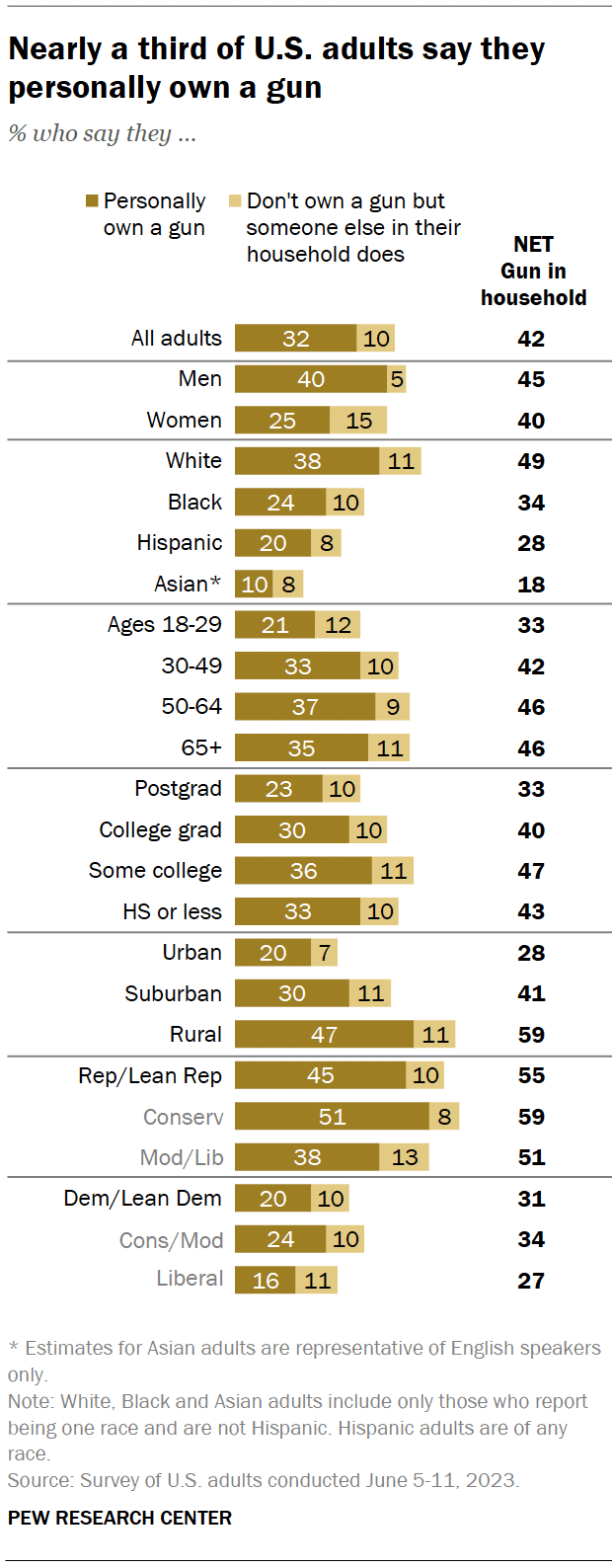
There are differences in gun ownership rates by political affiliation, gender, community type and other factors.
- Party: 45% of Republicans and GOP-leaning independents say they personally own a gun, compared with 20% of Democrats and Democratic leaners.
- Gender: 40% of men say they own a gun, versus 25% of women.
- Community type: 47% of adults living in rural areas report owning a firearm, as do smaller shares of those who live in suburbs (30%) or urban areas (20%).
- Race and ethnicity: 38% of White Americans own a gun, compared with smaller shares of Black (24%), Hispanic (20%) and Asian (10%) Americans.
Personal protection tops the list of reasons gun owners give for having a firearm. About seven-in-ten gun owners (72%) say protection is a major reason they own a gun. Considerably smaller shares say that a major reason they own a gun is for hunting (32%), for sport shooting (30%), as part of a gun collection (15%) or for their job (7%).
Americans’ reasons behind gun ownership have changed only modestly since we fielded a separate survey about these topics in spring 2017. At that time, 67% of gun owners cited protection as a major reason they had a firearm.
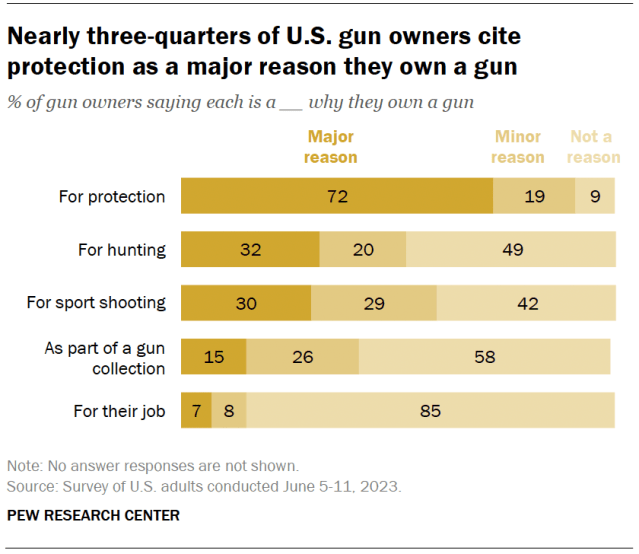
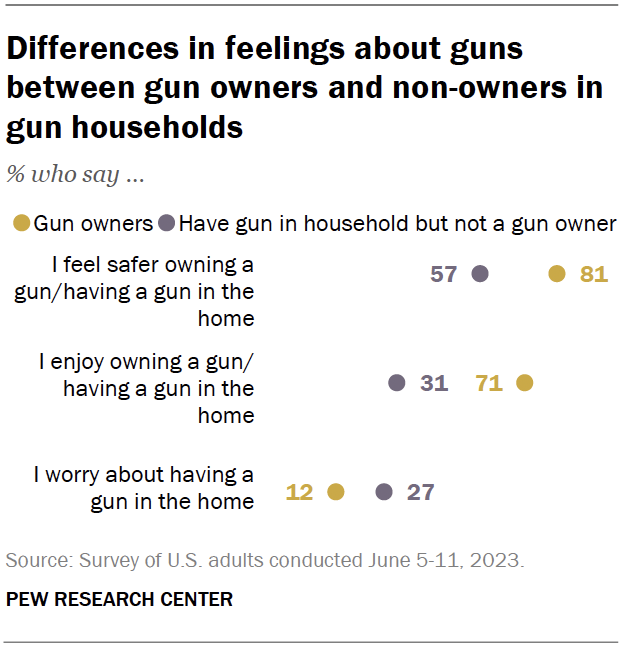
Gun owners tend to have much more positive feelings about having a gun in the house than nonowners who live with them do. For instance, 71% of gun owners say they enjoy owning a gun – but just 31% of nonowners living in a household with a gun say they enjoy having one in the home. And while 81% of gun owners say owning a gun makes them feel safer, a narrower majority of nonowners in gun households (57%) say the same. Nonowners are also more likely than owners to worry about having a gun at home (27% vs. 12%).
Feelings about gun ownership also differ by political affiliation, even among those who personally own a firearm. Republican gun owners are more likely than Democratic owners to say owning one gives them feelings of safety and enjoyment, while Democratic owners are more likely to say they worry about having a gun in the home.
Non-gun owners are split on whether they see themselves owning a firearm in the future. About half of Americans who don’t own a gun (52%) say they could never see themselves owning one, while nearly as many (47%) could imagine themselves as gun owners in the future.
Among those who currently do not own a gun, attitudes about owning one in the future differ by party and other factors.
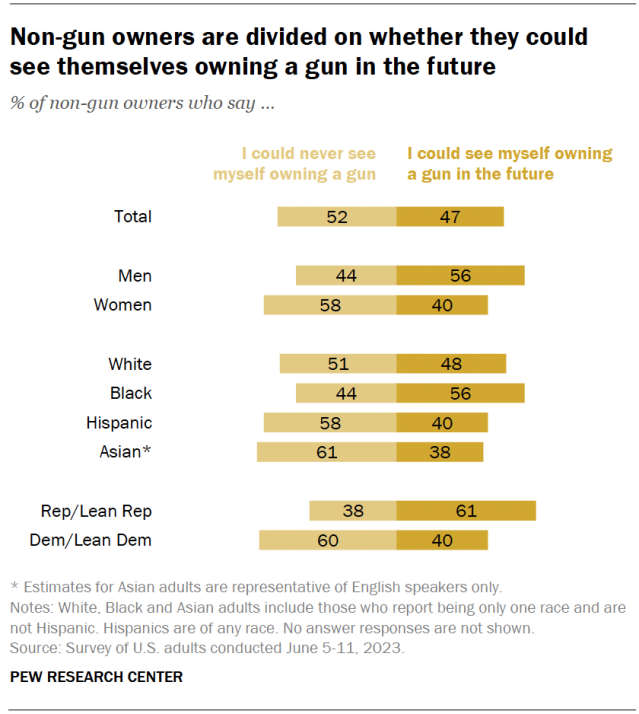
- Party: 61% of Republicans who don’t own a gun say they could see themselves owning one in the future, compared with 40% of Democrats.
- Gender: 56% of men who don’t own a gun say they could see themselves owning one someday; 40% of women nonowners say the same.
- Race and ethnicity: 56% of Black nonowners say they could see themselves owning a gun one day, compared with smaller shares of White (48%), Hispanic (40%) and Asian (38%) nonowners.
A majority of Americans (61%) say it is too easy to legally obtain a gun in this country, according to the June 2023 survey. Far fewer (9%) say it is too hard, while another 30% say it’s about right.
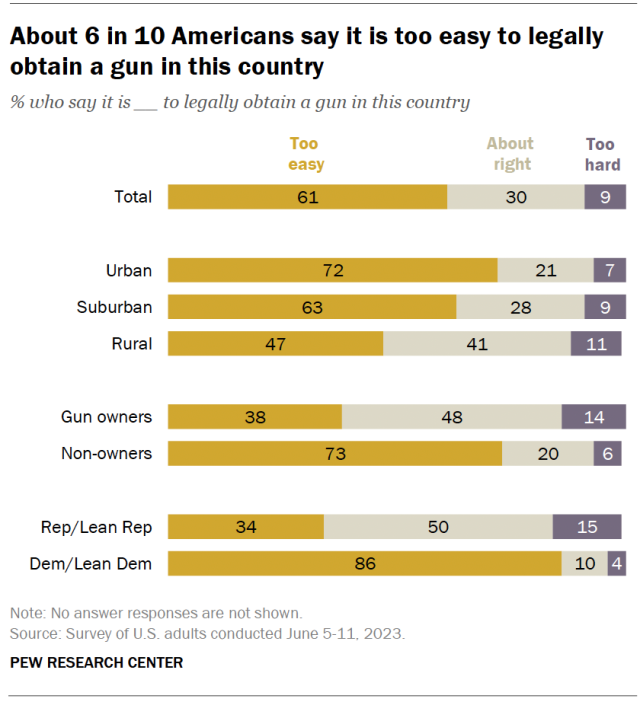
Non-gun owners are nearly twice as likely as gun owners to say it is too easy to legally obtain a gun (73% vs. 38%). Gun owners, in turn, are more than twice as likely as nonowners to say the ease of obtaining a gun is about right (48% vs. 20%).
There are differences by party and community type on this question, too. While 86% of Democrats say it is too easy to obtain a gun legally, far fewer Republicans (34%) say the same. Most urban (72%) and suburban (63%) residents say it’s too easy to legally obtain a gun, but rural residents are more divided: 47% say it is too easy, 41% say it is about right and 11% say it is too hard.
About six-in-ten U.S. adults (58%) favor stricter gun laws. Another 26% say that U.S. gun laws are about right, while 15% favor less strict gun laws.
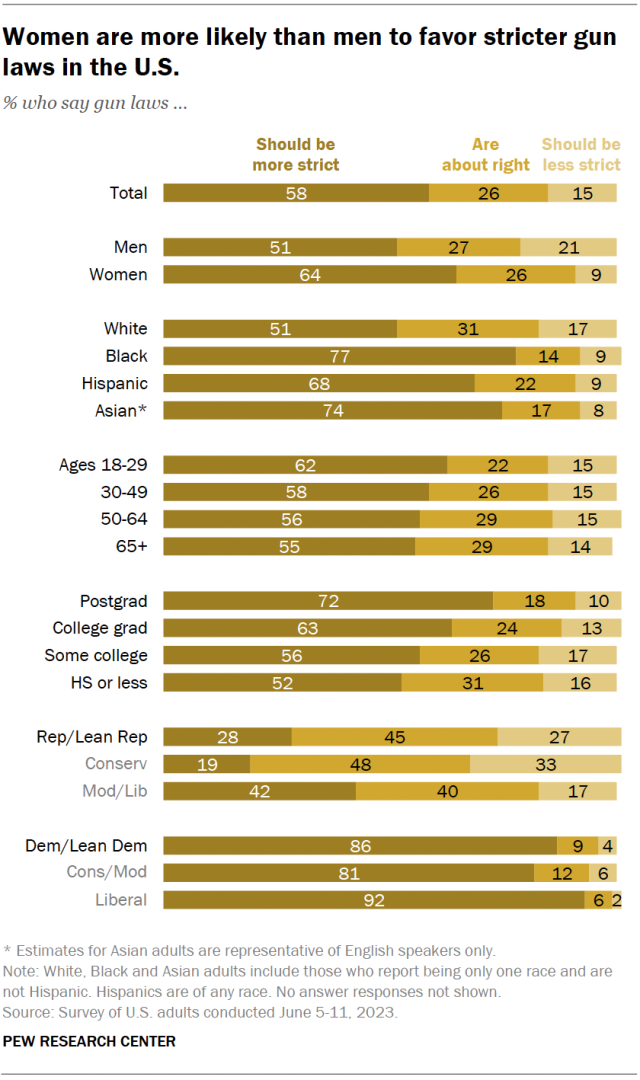
There is broad partisan agreement on some gun policy proposals, but most are politically divisive. Majorities of U.S. adults in both partisan coalitions somewhat or strongly favor two policies that would restrict gun access: preventing those with mental illnesses from purchasing guns (88% of Republicans and 89% of Democrats support this) and increasing the minimum age for buying guns to 21 years old (69% of Republicans, 90% of Democrats). Majorities in both parties also oppose allowing people to carry concealed firearms without a permit (60% of Republicans and 91% of Democrats oppose this).
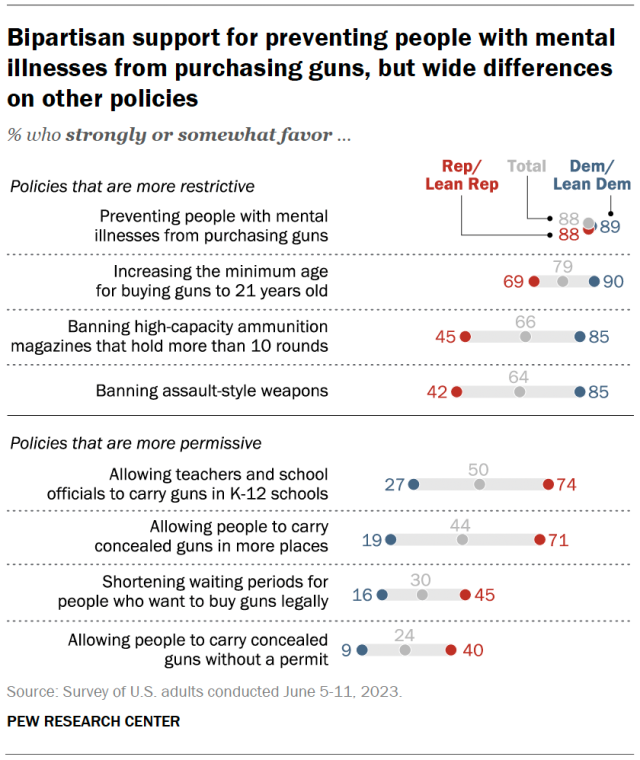
Republicans and Democrats differ on several other proposals. While 85% of Democrats favor banning both assault-style weapons and high-capacity ammunition magazines that hold more than 10 rounds, majorities of Republicans oppose these proposals (57% and 54%, respectively).
Most Republicans, on the other hand, support allowing teachers and school officials to carry guns in K-12 schools (74%) and allowing people to carry concealed guns in more places (71%). These proposals are supported by just 27% and 19% of Democrats, respectively.
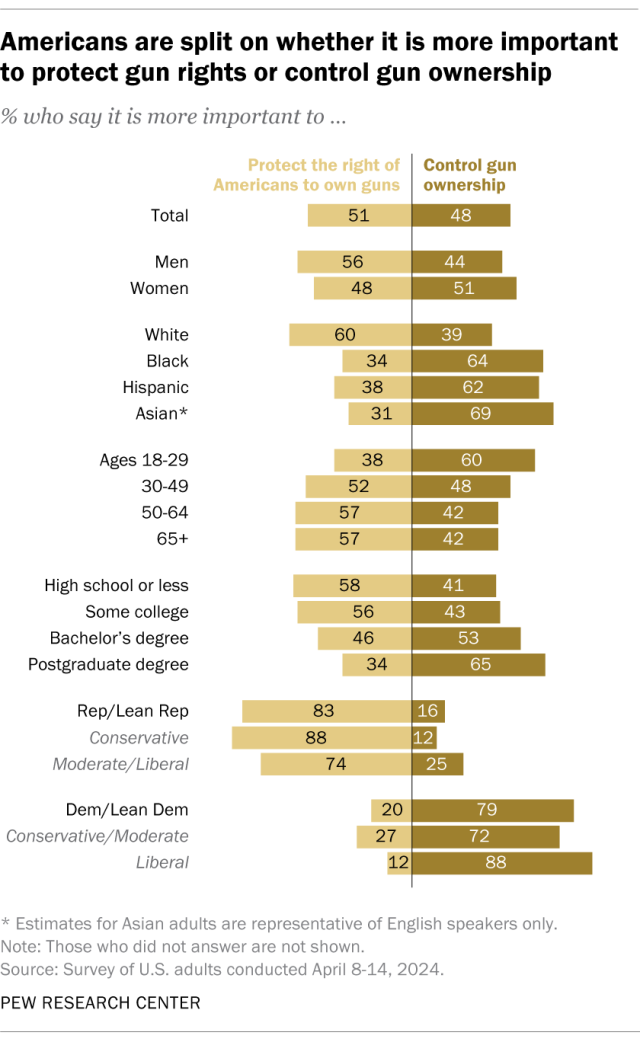
The public remains closely divided over whether it’s more important to protect gun rights or control gun ownership, according to an April 2024 survey. Overall, 51% of U.S. adults say it’s more important to protect the right of Americans to own guns, while a similar share (48%) say controlling gun ownership is more important.
Views have shifted slightly since 2022, when we last asked this question. That year, 47% of adults prioritized protecting Americans’ rights to own guns, while 52% said controlling gun ownership was more important.
Views on this topic differ sharply by party. In the most recent survey, 83% of Republicans say protecting gun rights is more important, while 79% of Democrats prioritize controlling gun ownership.
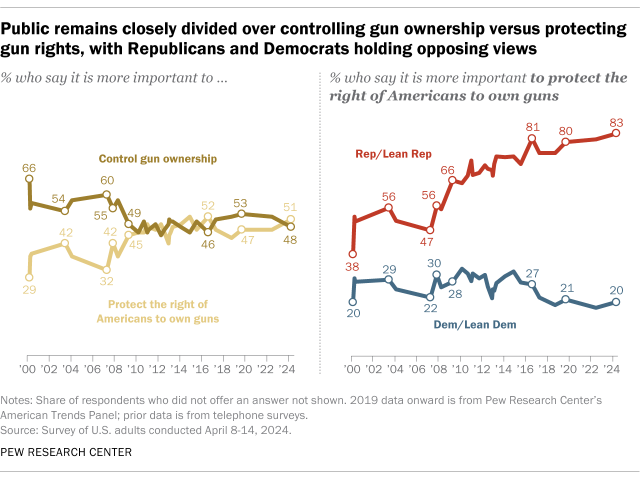
Americans are slightly more likely to say gun ownership does more to increase safety than to decrease it. Around half of Americans (52%) say gun ownership does more to increase safety by allowing law-abiding citizens to protect themselves, while a slightly smaller share (47%) say gun ownership does more to reduce safety by giving too many people access to firearms and increasing misuse. Views were evenly divided (49% vs. 49%) when we last asked in 2023.
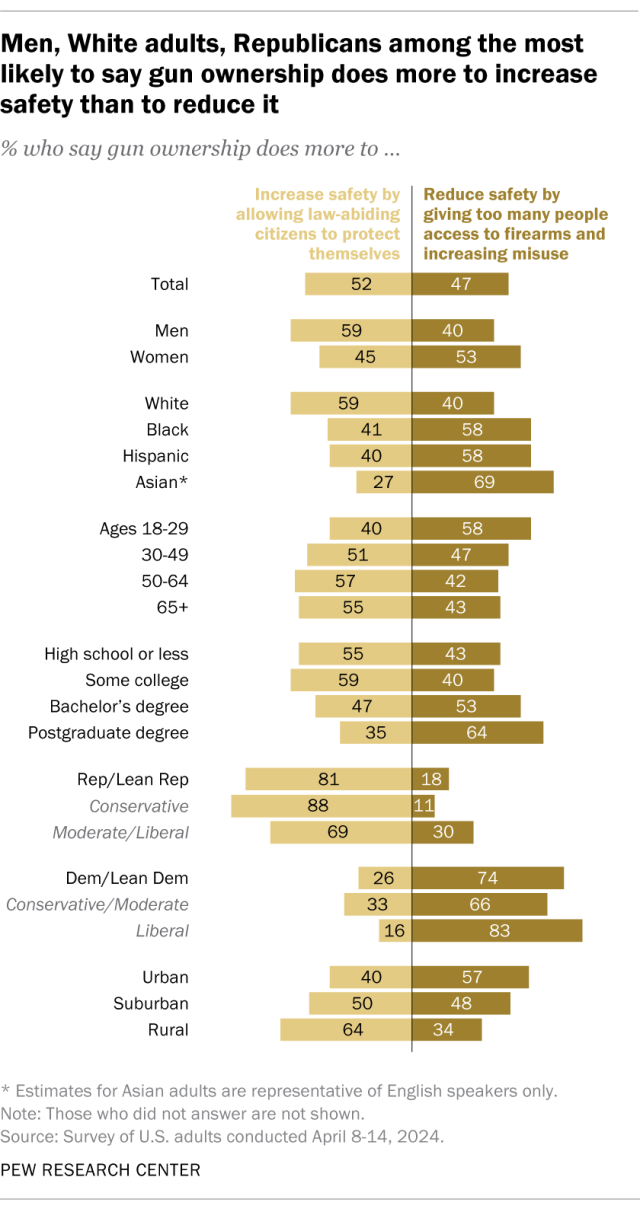
Republicans and Democrats differ widely on this question: 81% of Republicans say gun ownership does more to increase safety, while 74% of Democrats say it does more to reduce safety.
Rural and urban Americans also have starkly different views. Among adults who live in rural areas, 64% say gun ownership increases safety, while among those in urban areas, 57% say it reduces safety. Those living in the suburbs are about evenly split in their views.
More than half of U.S. adults say an increase in the number of guns in the country is bad for society, according to the April 2024 survey. Some 54% say, generally, this is very or somewhat bad for society. Another 21% say it is very or somewhat good for society, and a quarter say it is neither good nor bad for society.
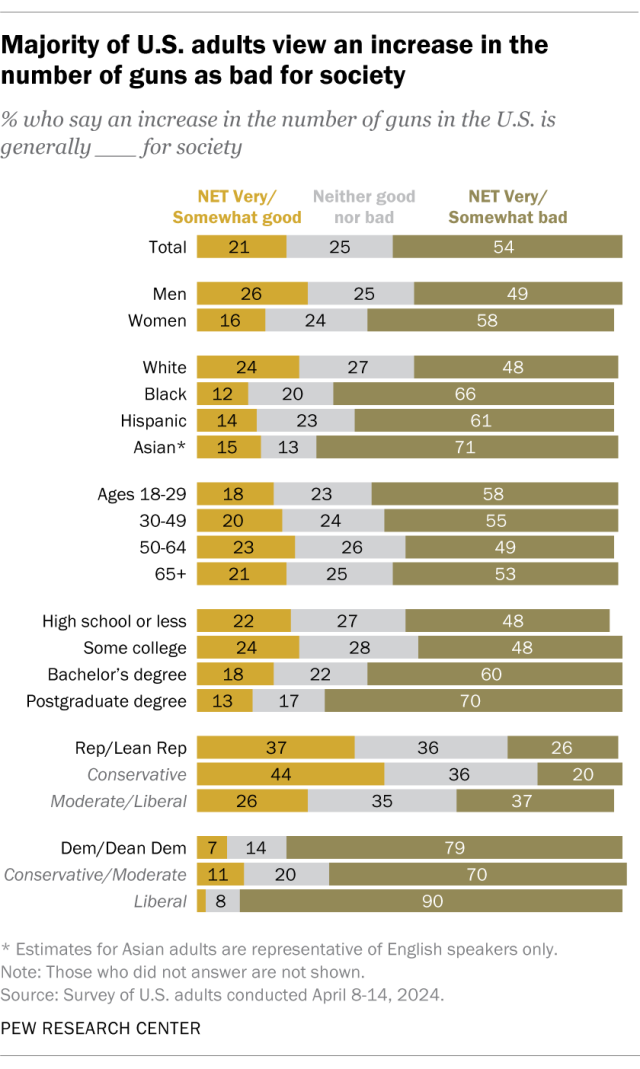
About half of Americans (49%) see gun violence as a major problem, according to a May 2024 survey. This is down from 60% in June 2023, but roughly on par with views in previous years. In the more recent survey, 27% say gun violence is a moderately big problem, and about a quarter say it is either a small problem (19%) or not a problem at all (4%).
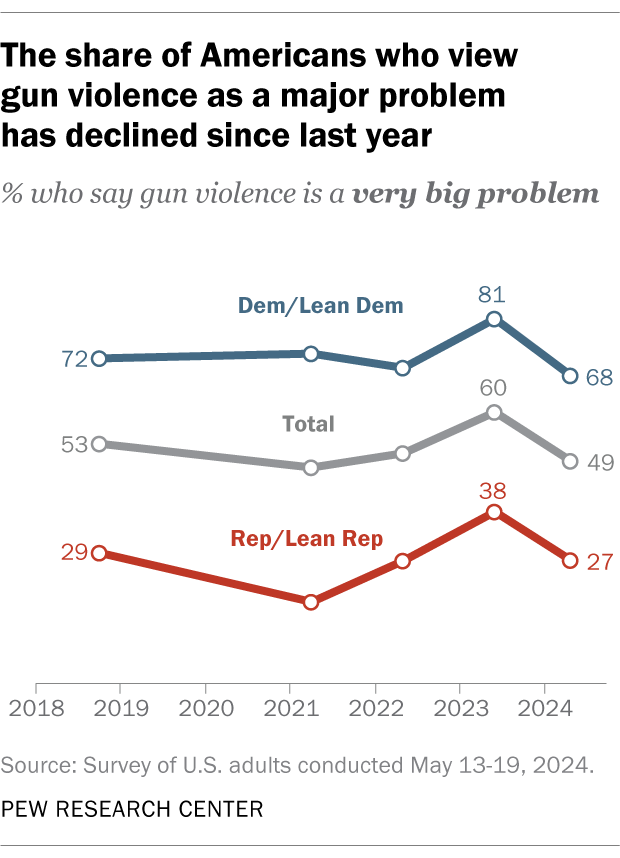
A majority of public K-12 teachers (59%) say they are at least somewhat worried about the possibility of a shooting ever happening at their school, including 18% who are very or extremely worried, according to a fall 2023 Center survey of teachers. A smaller share of teachers (39%) say they are not too or not at all worried about a shooting occurring at their school.
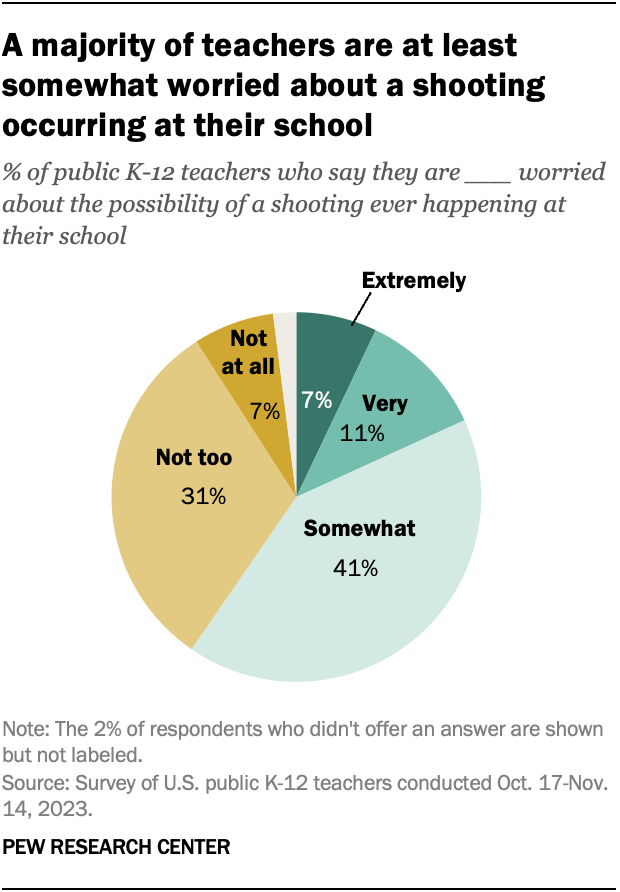
School shootings are a concern for K-12 parents as well: 32% say they are very or extremely worried about a shooting ever happening at their children’s school, while 37% are somewhat worried, according to a fall 2022 Center survey of parents with at least one child younger than 18 who is not homeschooled. Another 31% of K-12 parents say they are not too or not at all worried about this.
Note: This is an update of a post originally published on Jan. 5, 2016.
